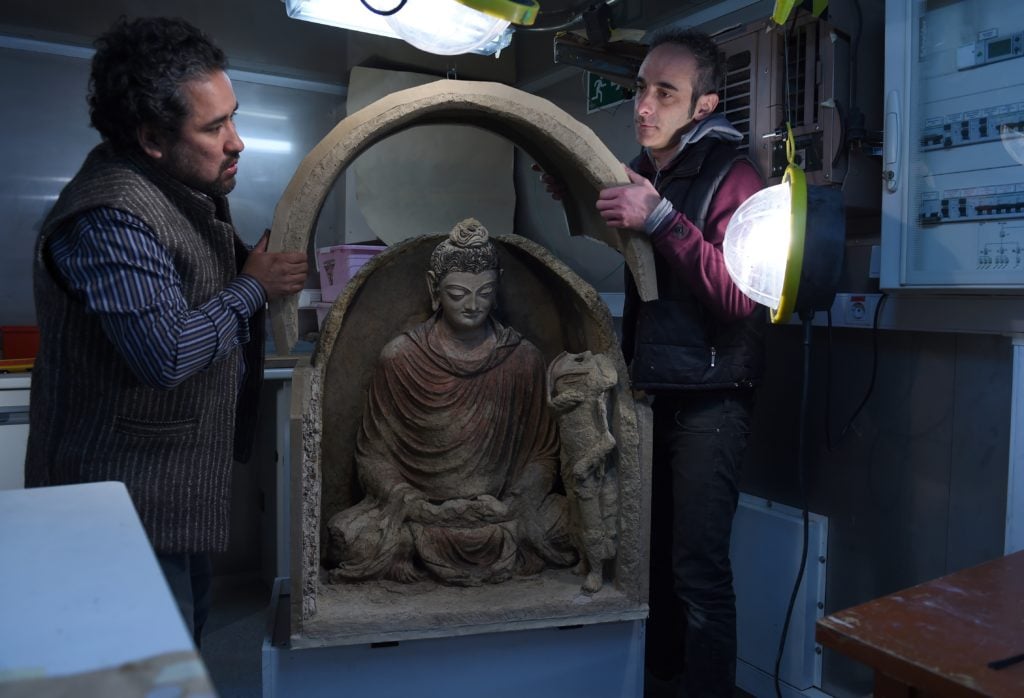Art World
Ancient, Near-Perfect Buddha Unveiled in Afghan National Museum
The statue had spent centuries buried underneath silt and soil.

The statue had spent centuries buried underneath silt and soil.

Caroline Elbaor

A buddha that had previously been buried underneath layers of soil and silt for more than 15 centuries is due to be unveiled at the National Museum of Afghanistan in Kabul.
The statue—which despite its past is in near-perfect condition—portrays the buddha in purple drapery with hands towards the sky. It had been buried since some time between the third and fifth centuries in one of Afghanistan’s most dangerous regions.
The piece was found in 2012 at the Mes Aynak site about 40 kilometres (25 miles) southeast of Kabul, which has been since overrun by the Taliban.
“The statue was almost whole when it was discovered, with its head present, which is rare,” said Ermano Carbonara, an Italian restoration expert. “It was placed in the center of a niche, which itself had been decorated with painted flowers, in the heart of a great center of (an area used for) prayer.”
“It was better to remove it from the site to protect it,” he elaborated.
Upon first discovery, the Buddha’s head had fallen off, but the fact that its head was found at all was reason enough to celebrate. “We find plenty of headless statues. If we’d left it be, its head wouldn’t have lasted a long time,” said Julio Bendezu, director of DAFA, the French government archaeological mission in Afghanistan.
Once returned to the DAFA offices in Kabul, a team of Italian, French, and Afghan workers replaced the head and moved the Buddha back into the recess with two other smaller figures by its side, which represent either patrons or monks.
“Often, those who financed the construction of the statue and its housing wanted themselves represented by its side,” Bendezu said of the figures.
The Buddha is part of a larger exhibition dedicated to objects found and excavated in Mes Aynak that speaks of Afghanistan’s pre-Islamic history.